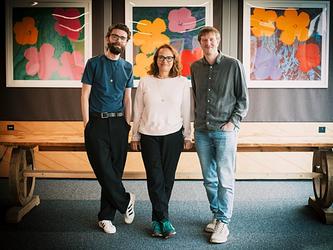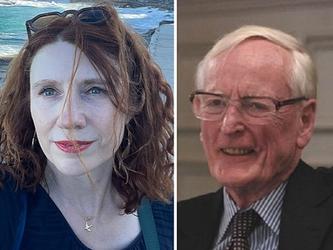Valentine’s Day: does romance still sell?

Another Valentine’s Day, another opportunity for brand tie-ins, however inappropriate or opportunistic. But does romance really sell? And what does ‘romance’ mean today? Is it still all about hearts and flowers or have we become too sophisticated and/or cynical for all of that?
At first sight, there is considerable evidence that traditional concepts of romance are gone. The proportion of single people worldwide is rising, one in ten children have viewed pornography by the age of nine, according to Action for Children data, and a recent YouGov survey found that only a third of people plan to celebrate Valentine’s Day this year.
Perhaps the most convincing evidence for the demise of traditional romantic mores is the success of the M&S ‘love sausage’, in terms of publicity and social media coverage. Forget chocolates and flowers; these days, nothing says ‘romance’ more than heart-shaped pork products.
As always, digging into the Archive of Market and Social Research can turn up some gems from the past to help us understand how we got to where we are today. If we look through the CRAM collection (a set of papers and reports amassed by Cooper Research & Marketing), Peter Cooper’s qualitative research shows how products were marketed in the 1970s to appeal to the desire for romance.
Babycham (the prosecco of the 70s) was positioned as a romantic drink for women. Words used by participants about Babycham, signifying romance, included ‘dreamy’, ‘sparkly’, ‘bubbly’, ‘excitement’ and ‘fun’. This is before (ill-advised and short-lived) attempts in the 1980s to broaden the brand’s appeal to men with the iconic ‘I’d love a Babycham’ campaign.
- “Babycham has potential in terms of its warm, dreamy, romantic images, its presence which can suggest that something will happen, the sense of excitement”.
- “Light, bubbly, innocent fun”
- “Excitement, good humour, echoes of Christmas, romance, fairy tales, magical”
Meanwhile, the Black Magic chocolates brand, marketed as a gift for women with the tag line ‘Who knows the secret of the Black Magic box?’ was found to be “losing some of its excitement, romance, and magic, and is becoming rather mundane and safe”. The research explored 'feelings about Black Magic, with special regard to romance, love, excitement, mystery, quality, and mystique'.
To understand why such qualities could be projected onto products at that time, it helps to understand what was going on for women in the 1970s. Research for Boots in 1977, ‘The Teenage Enigma’, found that young women had rather limited horizons:
- ‘Nearly all respondents considered that the chief landmark in their futures would be marriage, and many gave this as their sole ‘ambition'. On the whole, they expect to be married by 22 or 23 and to have two or three children before they reach 30.’
By 1974, contraception had been available for some years, and attitudes to sex before marriage are discussed in the report. You’d have thought that this would be the start of romance going out of the window, but no...
- "Even the most promiscuous girls are very romantic about marriage" (Teacher)
In fact, we see that almost anything which was out-of-the-ordinary was thought to be romantic in the 1970s – flying, foreign holidays, even smoking ‘exotic’ cigarettes was seen to add mystery, glamour, excitement and romance to a person. Normal life was rather humdrum and unexciting. Romance was escapism from the everyday – it led to fun and love.
Today, a lot of what was seen as exotic in the 70s has become commonplace – and the modern world has brought its own set of problems – yet children still adore Disney princesses, tens of thousands are spent on ‘fairy-tale’ weddings and dating sites do tremendous business.
In the 1970s, housing (availability, mortgages, inflation) was the big issue. Young people weren’t much engaged in the news and politics; they mainly worried about the usual things that young people still worry about today: themselves, their relationships, their looks, having enough money and getting on in life.
If we look at modern research by Opinium on young people in the Archive, we see concerns with serious matters such as housing (still), mental health, technology and climate change. So now, as always, romance represents a need for escapism from these harsh realities.
With spending on Valentine’s Day reaching over £900m in the UK in 2022, the day still presents a huge opportunity for brands. We don’t need to stick to ‘hearts and flowers’ as long as what we are offering is different, fun and a break from the norm. Perhaps a heart-shaped sausage is the epitome of modern romance after all.
By Judith Staig, with thanks to Phyllis Macfarlane and the content team at AMSR

We hope you enjoyed this article.
Research Live is published by MRS.
The Market Research Society (MRS) exists to promote and protect the research sector, showcasing how research delivers impact for businesses and government.
Members of MRS enjoy many benefits including tailoured policy guidance, discounts on training and conferences, and access to member-only content.
For example, there's an archive of winning case studies from over a decade of MRS Awards.
Find out more about the benefits of joining MRS here.













0 Comments